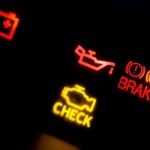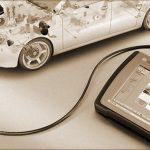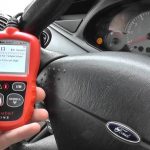When your car’s computer experiences a problem, it will store a diagnostic trouble code. A scanner plugged into the OBD port of your car will display these codes so you can identify exactly what’s causing the issue and take necessary action.
However, these codes can be complicated to decipher and there are thousands of them. Being able to interpret them correctly will save you both time and money in the long run.
Powertrain
The powertrain is an intricate network of components that create, convert and transfer energy to propel a vehicle forward. The engine generates power, the transmission transforms it into usable energy for use by the driveshaft and differential, which in turn distributes that force to the wheels.
The OBD codes list is divided into four categories: body (B-codes), chassis (C-codes), powertrain (P-codes), and network & vehicle integration (U-codes). Each category has its own letter and three digits, with the first digit indicating whether it’s generic or manufacturer specific.
P-codes are the most widespread type, covering components such as the engine, transmission and drivetrain accessories; fuel systems and auxiliary emissions controls; oxygen sensor issues, fuel metering issues and air-to-fuel ratio control issues.
Each digit in the code indicates which system is affected and helps identify what caused it. Numbers 1 and 2 refer to fuel or air metering problems, while 3 and 4 deal with ignition or engine misfire issues.
Numbers 5 and 6 signify problems with computer or output circuits, while 7 and 8 point to transmission issues. The last two digits – known as the specific fault index – identify which part is at fault.
The obd codes list is essential for understanding a vehicle’s internal workings, and it can provide guidance when components fail. It also tells you when your factory warranty ends and what a powertrain warranty covers and does not cover. Knowing these things beforehand ensures you have coverage when the time comes.
Engine
OBD codes are used to detect issues with various components of your car and can be retrieved using a scan tool or code reader. They’re universal, meaning they work across all makes and models of vehicles.
The engine is one of the most critical elements in a car’s powertrain and it propels your vehicle forward. Additionally, it controls fuel intake and emission systems as well as maintaining cylinder temperature and pressure.
Engine designs vary, from inline engines with just one bank of cylinders to V-engines with two banks of cylinders. Some of these engine designs feature special components unique to that type that may be reflected in its fault codes list.
P0Xxx codes indicate a problem within the powertrain system; this could involve issues with air metering and fuel mileage systems, ignition control systems or auxiliary emissions controls like EVAP (Evaporative Emission Control) and idle speed control.
Errors in your vehicle’s engine can have serious repercussions for performance and safety, so it’s essential that you understand what they signify if you want to fix your car quickly. Your engine is one of the most critical components in a vehicle; if there’s an issue, address it promptly.
If you’re not sure what the initial characters of your OBD codes signify, try reading through your owner’s manual or vehicle service manual for more details. Once you understand what those initial characters signify, use the remainder of the characters to decipher what the issue is and identify its cause.
Transmission
The transmission is an integral part of your car that converts engine power into something usable by your vehicle. Without it, your car would simply sit idle without any action taken.
Automatic transmissions are a popular type of transmission, which functions through computer control to automatically change gears as the driver shifts their foot. They’re much simpler to operate than manual gearboxes and ideal for people who don’t have the time or inclination to manually shift clutches.
Your Check Engine Light may illuminate several standard transmission error codes, but the most critical ones indicate an issue with the transmission itself. Understanding how to read these codes accurately will enable you to pinpoint the source of the issue and take necessary steps for repair before any lasting harm occurs.
Common transmission error codes include P0700, P0702 and P0715. These messages indicate an issue with your engine’s RPMs that prevents the transmission control system from reading them properly.
Codes such as this one may indicate your transmission is malfunctioning and could indicate a problem with either the fluid sensor or TCM programming. Depending on the specific issue, your mechanic may be able to repair it by replacing either the fluid sensor or TCM itself.
Most diagnostic codes are generic, meaning they apply to all makes and models of vehicles; however, some are manufacturer-specific. If your trouble code starts with 0 as its first digit, it is considered a global code; on the other hand, if it begins with 1 as its initial digit, then it is unique to that particular make and model.
Body
When a vehicle’s computer experiences an issue, it will store a Diagnostic Trouble Code or DTC in its ECU memory. With an OBD scanner, this code can be read to identify which part of the car is malfunctioning and which system is to blame.
The initial digit of a bar code indicates which system is affected, while the second indicates the precise fault. Each digit can be either an integer (0-9) or letter (A-F).
P codes indicate powertrain issues, C codes pertain to chassis functions and U codes cover network and vehicle integration functions. Each of these systems has a set of codes that can be read using an OBD scan tool.
If you’re not familiar with OBD codes, they can be confusing and mysterious to many people. With some guidance though, you can decipher these messages and understand what your Check Engine Light means when it illuminates.
One of the most essential facts to comprehend about an OBD codes list is that different codes apply to various vehicles. While some codes are universal and apply to all cars using OBD-II standard, others are specific to a manufacturer.
There are also other codes which are not universal, so be sure to consult your vehicle manual for them. Furthermore, many websites offer interpretation of these codes so you can get a more precise indication of what your Check Engine Light means.
The obd codes list is an indispensable asset in the automotive industry, making it simple to diagnose issues and keep your car running optimally. With this data, you can detect potential repair issues as well as verify that parts are installed correctly.
Emissions
Air pollution emissions originate from various sources, such as industrial manufacturing, transportation and other technologies. They can cause a range of health issues and degrade air quality. Furthermore, these emissions contribute to global warming by trapping heat in the atmosphere.
The primary human source of air polluting emissions is energy use and production. Burning fossil fuels emits carbon dioxide, a greenhouse gas that causes climate warming. Other pollutants include methane, nitrous oxide, hydrofluorocarbons, and perfluorocarbons.
In the United States, regulations restrict air pollutants. They are divided into three main categories: criteria pollutants, greenhouse gases and hazardous air pollutants.
Vehicle emissions control systems are constantly monitored by an onboard computer system. When there’s a problem, a “check engine” or service engine soon light will illuminate to alert drivers of the issue.
Once a fault has been detected, the OBD-II system stores a digital trouble code in its onboard computer to identify it. This code can be retrieved with a scanner and typically displayed on the OBD-II display.
OBD-II codes are also employed to assess whether a vehicle meets the emissions standards for its model year. In many states across America, OBD-II testing has replaced tailpipe tests in order to confirm if your car meets current emissions regulations for its year of construction.
In addition to displaying emissions-related diagnostic trouble codes, the OBD-II system can also report on the status of the emission monitoring system for each driving cycle. This data is useful in determining any components related to emissions and can help detect issues before they become serious.






How do you find out what the codes mean once you know what they are?